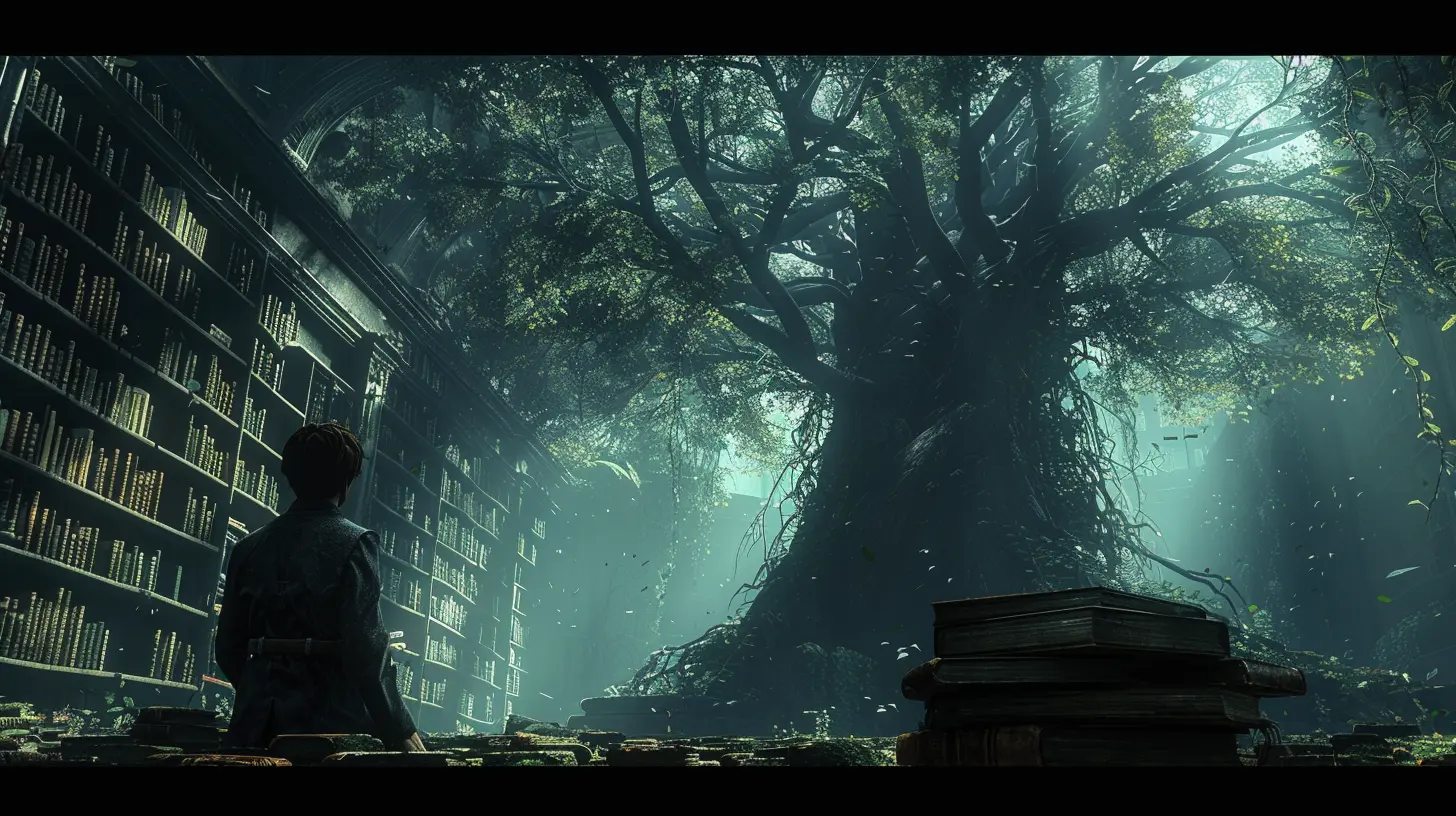Designing Choices That Matter: The Mechanics of Branching Storylines
24 July 2025
Ever wondered why some video games leave you replaying them over and over, while others fade away after a single run? More often than not, the answer lies in one powerful element: branching storylines. Games with meaningful choices and multifaceted paths not only immerse us deeper but also make us feel like architects of the story. They offer that delicious illusion of control, letting us believe that every decision matters. But how do game developers craft such narratives? Let's peel back the curtain and dive into the mechanics of branching storylines.
Oh, and don’t worry—this isn’t some dry technical breakdown. Think of this as a casual conversation between friends, with just enough geeky layers to keep things interesting. So grab your metaphorical controller, and let’s press start! 
What Are Branching Storylines?
Before we geek out about the mechanics, let’s cover the basics. A branching storyline is a narrative structure where the player's decisions shape the outcome of the story. Unlike linear stories where you’re strapped into a metaphorical roller coaster with no control over where it goes, branching storylines give you the keys to the car.Think of it like a "Choose Your Own Adventure" book. You know, the ones where every choice you make sends you tumbling down a different path? Games like The Witcher 3, Detroit: Become Human, and Mass Effect have perfected this art. But what makes these choices feel so impactful? And, more importantly, how do developers design these webbed narratives without them collapsing under their own complexity? 
The Psychology of Meaningful Choices
Creating meaningful choices isn’t just about letting players pick between option A or B. It’s about making those choices matter. Have you ever played a game where you had to choose between saving one character or another, and you actually paused the game because the decision was just too agonizing? That’s when a game nails it.Players want their decisions to carry emotional weight and have tangible consequences. If you’re choosing between saving puppies or burning down an orphanage, the stakes are clear-cut. But add moral ambiguity, like betraying a friend to save a loved one, and suddenly you’re in "pull-your-hair-out" territory.
Games with branching storylines tap into the psychology of ownership. When players feel like they own the story—when their decisions leave ripples throughout the game—they invest emotionally. This investment is what keeps players attached long after the credits roll. 
The Framework: How Branching Storylines Work
Okay, time to get a bit technical—just a little, I promise. There are a few key frameworks developers rely on to make branching narratives work. Let’s break them down.1. Decision Trees
This is the bread-and-butter of branching storylines. Picture a tree with roots digging into the ground and branches twisting into the sky. Every decision a player makes is a branch, and each of those branches leads to new, diverging outcomes. The thing is, as choices multiply, so does the complexity. This is a nightmare for developers but a treat for us players.Take Until Dawn, for example. The “butterfly effect” mechanic shows how one choice (big or small) can result in drastically different stories. Accidentally step on a stick in chapter one? You might doom a character in chapter six.
2. Hub-and-Spoke Structures
Not all games let you go wild with infinite branching; some reel you in with a more controlled structure. Hub-and-spoke designs are like a wheel. The hub is a central plot point, and the spokes are smaller, self-contained branches stemming off it.Games like Dragon Age use this design to balance player freedom with narrative cohesion. You might face drastically different subplots, but you’ll eventually circle back to the main storyline. It’s a best-of-both-worlds approach—a little sandbox freedom with some narrative guardrails.
3. Reactivity and Consequences
What good is a choice if it doesn’t lead anywhere? This is where consequences come into play. It’s not about the instant payoff (though those are satisfying too); it’s about the long game. Decisions should ripple across the narrative like a pebble dropped in a pond.Remember Telltale’s The Walking Dead? The game constantly slapped us with choices that had major repercussions, sometimes not revealed until hours later. Do you side with Kenny, or do you protect Clementine? Each decision reshapes relationships, trust, and survival odds. 
Challenges of Designing Branching Storylines
Let’s not sugarcoat—it’s crazy hard to design branching narratives. Developers are pretty much walking on a tightrope while juggling flaming swords. Here’s why.1. Content Overload
For every decision made, developers have to create new content: new dialogue, animations, locations, and even new endings. The more branches, the more complex it gets. If you’re not careful, you’ll end up creating a gargantuan game that even the most hardcore gamer can’t finish.2. Player Expectations
Gamers are smart, and let’s be honest, pretty demanding. If a game promises, “Your choices matter,” but it turns out all roads lead to the same ending, players feel cheated. Developers must strike a balance between offering freedom and keeping the narrative tight.3. Resource Management
Creating multiple storylines eats up time, money, and manpower. Indie developers especially face this challenge. That’s why some games lean on the illusion of choice—offering branching dialogue or minor consequences while still delivering a mostly linear narrative.Examples of Branching Storylines Done Right
Let’s give a shoutout to some legends of the genre.1. The Witcher 3: Wild Hunt
This RPG masterpiece nails the “cause and effect” concept. Geralt’s decisions—whether sparing a monster or siding in a political dispute—shape the fates of entire regions. And the best part? The game doesn’t guilt-trip you with an obvious “this is the good choice” or “this is the evil choice.” You constantly sit in moral gray areas.2. Detroit: Become Human
Talk about branching overload! This game is a labyrinth of decision trees. Every character you control can live or die, and the endings vary wildly depending on your choices. It’s the epitome of “what if?” storytelling.3. Life is Strange
This episodic game proves that even smaller studios can nail branching storylines. Every choice you make feels deeply personal, and players often end up agonizing over dialogue options because of the emotional investment the story creates.Why It Matters
At the end of the day, branching storylines elevate gaming to an art form. They blur the line between player and protagonist, turning us from passive spectators to active participants. These mechanics don’t just tell us a story; they let us create one.It’s the magic of agency. And isn’t that what gaming is all about—stepping into another world and feeling like you truly belong? Whether you’re saving kingdoms or making impossible moral calls, branching storylines make every decision feel impactful.
So the next time you’re agonizing over in-game choices, remember this: someone, somewhere, spent countless hours weaving those digital dilemmas. And in doing so, they handed you the reins to a story only you can craft. How cool is that?
all images in this post were generated using AI tools
Category:
Interactive StorytellingAuthor:

Stephanie Abbott
Discussion
rate this article
2 comments
Wilder Forbes
This article insightfully explores how branching storylines enhance player immersion and agency. By presenting meaningful choices and consequences, developers can create deeper emotional connections, making each player's journey uniquely impactful and memorable.
November 23, 2025 at 6:06 AM
Nix Newman
Great article! Your insights on creating impactful choices in branching storylines really resonate. It's fascinating how these mechanics can enhance player engagement and emotional investment. Looking forward to seeing more games embrace this approach, making storytelling even more immersive and meaningful. Keep up the fantastic work!
August 5, 2025 at 4:19 AM

Stephanie Abbott
Thank you for your thoughtful comment! I'm glad you found the insights valuable. Excited to see where this approach takes storytelling in games!


